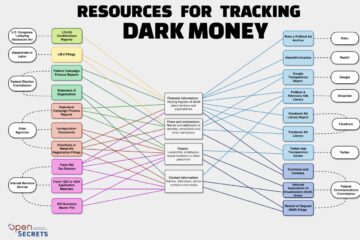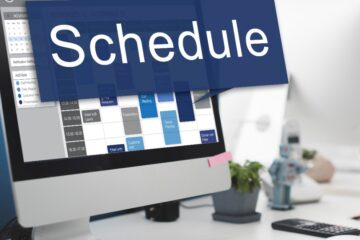Many of us woke up this week to find that we are suddenly public health reporters, in addition to whatever we were covering last month. So I spent a few hours today in webinars (so you didn’t have to!) listening to experts and journalists around the world discuss how to wisely and safely report on the pandemic.
The International Women’s Media Foundation hosted Lessons Learned from Journalists Covering Global Pandemics, and SciLine (from the American Association for the Advancement of Science) hosted Covering COVID-19 Media Briefing. The webinars were eye-opening, with heaps of ideas on how to do this right – and take care of ourselves, too.
As part of SPJ Rio Grande’s mission to help journalists through this crisis, I compiled key takeaways with some of my own comments for context. Many of you are already doing some of the things noted here (I’ve seen it in your stories). But the two meetings brought up an impressive range of ideas for reporters and editors of all stripes, especially as we incorporate so much science into our day-to-day reporting.
Finding stories:
New angles. Look for stories not already covered by the big outlets, says Quartz reporter Jane Li. Look for story ideas in local community announcements. Search social media groups; peruse YouTube for videos produced by community members, find them, interview them (online). Also read your outlet’s comments for story ideas, says Laura Helmuth, Washington Post health and science editor.
Use your organization as a network. If you’re working for a large media company, talk to colleagues at other outlets, in other bureaus, to learn what’s happening in their communities. This can add context and depth to our stories at home, and it can spark ideas, Li says.
“Fall in love with your subjects,” says Italy-based photojournalist Nadia Shira Cohen. Not in a romantic way, but in a human way. Find connections. This can be contrary to what we’re taught – not to get too close as journalists. But remember, our sources are “opening up their lives to us. They’re giving that to you…. It’s your duty to show it.”
Finding sources:
Talk to zoonosis researchers, not just human health, says Rebecca Kaplan, Cain fellow at the Science History Institute.
Talk to government. America’s public health system is a partnership among federal, state, and local government entities (and nonprofits) working together to augment each other. Almost every federal agency – from the Treasury to Agriculture – has people working in some capacity of health, says Dr. Georges Benjamin of the American Public Health Association.
Make off-the-record friends. It’s good to keep at least one epidemiologist, one lab person, and one hospital contact in your cell phone list, says ProPublica health reporter Caroline Chen. Develop relationships with them so you can give a quick call to ask their thoughts on stories off the record. We journalists often shy from off-the-record conversations – but in these times, with so much misinformation, it’s good to have an expert say, Yeah, this is good…. or, Ummm, no, I wouldn’t write that…
Reporting the story:
Repeat, repeat, repeat. We might be sick of hand-washing instructions, but fundamental information about the outbreak needs to be told again and again. Audiences are growing, and each message has the potential to reach new people, Helmuth says.
Debunk misinformation. This is going to be a huge part of our jobs, Helmuth says. In doing so, explain the rumor that’s going around, where it’s coming from, why it’s wrong, and what the facts are. Replace a falsehood with a truth.
Rigorously date your information. Things are changing so fast, says Chen, it’s important to tell audiences when the information was accurate. Use phrases like, “As of Monday morning…” Some facts and numbers will be in constant flux – like the number of tests or PPE supplies. Other information – like the concept of “flattening the curve” – will remain constant.
Report what is NOT known. Help audiences understand the limitations of scientific information, Chen says. When information is incomplete, sometimes it’s best to be imprecise. Use phrases like, “Scientists understand…” or “It is estimated that…”
Explain the scientific process. Scientists don’t have all the answers, but if our stories show their process, and the public can see they are hard at work, that information can help alleviate public anxiety, says Helmuth.
Recognize the politics. Know that every politician is giving information through a political lens, Benjamin says. Vet accordingly. Also understand this about public health policy: “They’re building this while they’re flying it.”
See the study. There are very, very few miracle cures in public health, Benjamin says. If a solution is legit, there will be a study. Ask your sources to see the studies.
Explain what you do. It’s more important than ever for audiences to understand why they can trust our information, Helmuth says. Show how you work. Explain where you get your facts and how you know they’re accurate. Explain the process of journalism. We can be very, very bad at this. It’s time to start tooting our own horn.
Put yourself in the story. Another no-no for a lot of us who were taught to stay out of the story. But it can be very helpful for audiences to know you are going through the same thing they are, Helmuth says. And readers react positively to personal perspectives, Chen says. Humanize the story.
Protecting sources:
Minimize harm. Throughout history, pandemics – from malaria to typhoid to AIDS and now COVID-19 – have led to scapegoating and blame that targets groups based on gender, race, class, sexuality, and immigration status, Kaplan says. As journalists, we should ask ourselves: How are we covering this? What language are we using? Do our stories inadvertently exacerbate aggression? In the past few weeks, we’ve seen reports of harassment (verbal, physical) against Asian Americans. Can we help minimize harm through our reporting?
Understand your sources’ risks. Sometimes we as journalists understand the risks that sources take by talking to us better than our sources do, says Li. This is particularly true for her, covering China. But it could be an issue for Asian Americans and other communities as well. If necessary, identify your sources in ways that authorities or others couldn’t fully identify them. Li says she has done this by using sources’ English names combined with Chinese surnames.
Taking care of yourself:
Understand traumatic stress. It affects us on three levels: biological, physical, and social, says Kate Porterfield, NYU clinical instructor in psychiatry, who specializes in trauma and journalism. “Thank your body for what it’s doing well.” But recognize what needs help.
Know when to stop. It’s OK to have boundaries and stop reporting, Porterfield says. When you have a certain amount of information, it’s OK to say, “this is enough,” and write the story. The trick is tolerating the feelings that go with that decision. As journalists, we tend to go and go and go until we hit a wall. We can set limits in order to protect ourselves.
Taking care of your staff (for editors & publishers):
Deal with traumatic stress in the newsroom. Discussions about stress and well-being can’t be sidelined; they should be central to the day-to-day operations of a newsroom, Porterfield says. Editors must understand “that traumatic stress is part of this work.” It’s imperative that bosses understand how traumatic stress affects employees, and to create newsroom policies and structures to help. Make sure employees have access to professional help and information on stress. Discuss the pace and limitations of work. This is especially important for reporters covering the day-to-day traumas of the pandemic.


